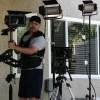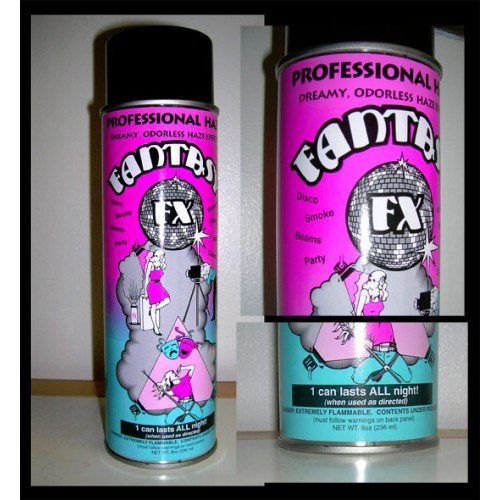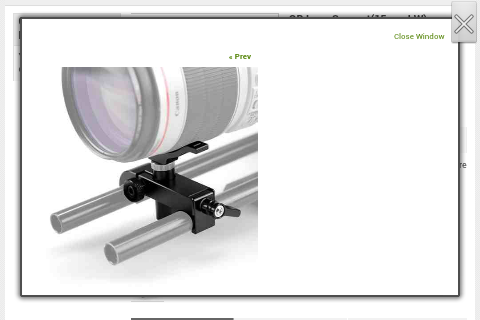-
Posts
41 -
Joined
-
Last visited
Profile Information
-
Occupation
Cinematographer
-
Location
North Wales
Contact Methods
-
Website URL
http://www.killersatplay.net
Recent Profile Visitors
-
Are you referring to shallow depth of field? Can you be clearer? I'm emphasizing that sharp focus is the difference between getting the reality gig or not. many inexperienced operators have difficulty where their shots were soft all the time. master the basics. the subject's eyes are sharp. that's the life lesson of getting your gig (or not).
-
Robin R Probin, It's okay. We're talking about "beginner stuff." We haven't gotten up to speed with your more advanced "Bourne stuff." When we're ready, we'll call you if that's okay with you.
-

Shafts of Light with 5 KW Fresnels
Larry DeGala replied to Vivek Venkatraman's topic in Lighting for Film & Video
Stuart Brereton, not sure where "be safe" was lost in translation. it is better to be forewarned than to be forlorned. Safety first. -

Lens support / rod system
Larry DeGala replied to Jay Young's topic in Accessories (Deprecated SubForum)
If you need the forward section to be absolutely rigid, you can position this clamp underneath the lens to create a "cantilevered spine" that will make 15mm rods as solid as the cheeseplate. It is impossible to bend or flex the rods to the point the anamorphic element would be misaligned. The cheeseplate must face down so you can use the lens mount on top of the 15mm rails. I find that rod clamps spaced evenly on the 15mm rod made the rods more rigid and mitigated the potential to flex on any portion of its length. Like suspension bridge engineering. Go figger! -

Shafts of Light with 5 KW Fresnels
Larry DeGala replied to Vivek Venkatraman's topic in Lighting for Film & Video
Corn starch is biologically safer than talcum powder (remembering the time students clapped chalkboard erasers, eek!). When using any flour, do not have an open light source (such as burning candle or torch) nearby. Fine flour misted in the air will ignite, and anything flammable in that flour mist will also burst into flames (actors). Be safe and have fun! -
I like my rig to mimic the form of the old 3-chip 2/3-inch broadcast cameras (Sony / Ikegami ) because of their ergonomics and balance despite their heavy weight. The film cameras in 90s did not have the same ergonomics. You had a belt with a rod to hold up the front portion of the camera while the rear base perched on your shoulder. Rigs became the mother of necessity when DSLRs said smaller is better. I needed to go back to heavier mass, so I'd stack V-mounts by 3s for more stable handheld, mitigating unintentional shakes and jars. I'd use a monopod fully retracted, the end jammed in my belt. I'd give myself some room for error by shooting at f/5.6 to f/11. Pulling your own focus on a reality show or documentary came with the territory. Your subject is moving, you're moving, the focus ring is spinning like a roulette wheel. An easier range is 25mm to 50mm. More experienced operators can nail 85mm to 135mm with ease. The important thing is to remain tack sharp throughout recording. Experience will come over time. Thank the ARRI gods for making the AMIRA user-friendly in its ergonomics!
-

Lens support / rod system
Larry DeGala replied to Jay Young's topic in Accessories (Deprecated SubForum)
hey, Satsuki, that (Element Technica) support I could trust to hold up Zeiss cz.2 lens or Optimo zooms. The ARRI LS-9 is very similar, but for 19mm rods. It is only $200 more. The lens support on 15mm is more to take up any lash, essentially locking up the barrel of the Angeniuex zoom to the CP-16 mount. On the other hand, the 19mm rod system is rigid enough to carry the full weight of very heavy glass like CZ.2 or Optimo mounted on Amira. May be overkill for a CP-16, but if you have the money to burn, by all means do so. my problem with Angenieux zooms on CP-16 was critical back focus on the wide. always needed re-seating. probably less so once properly supported. any support is better than no support. smallrig.com is a start. -
Wow, still technically solid for film negative to digital. I am very impressed with the evening (sunset) shot at the end. I love how it handles the boulevard with high contrast lighting. And the reflected light from passing traffic spilling into the foyer shows films sensitivity. It very much mimics how the human would see. "The Walking Dead" is over one million feet of Super 16 film negative and probably on their way to shooting two million feet of Eastman Kodak. The thing to look out for is critical back focus on the wide angle, apparent on various zooms. I was messing around with the 2.5K RAW of the BMCC camera, seeing how far I can trash the sensor and see what a "best light" grading could come up. My f-stop was wide open at 1.4 and 2.8. I used the highest and noisiest ASA of 1600. Comparing with your S16 negative, my sunset shots did not fare too well and the daytime high contrast shots are not as even as your boulevard. This test was for my own curiosity, as the YouTube codec was darkening client footage by two stops. I also have Vimeo Pro but working on a quarter million views per channel on YouTube, I have no choice but to go where the traffic is. The half hour shows were running almost 200 gigabytes. Using H.264 YouTube specs, I get to upload a measly 2 gB (wondering where the 198 gB went??). The vimeo codec was giving me a respectable 20 gB from the 200 gB original. I just hate math. https://www.youtube.com/watch?v=RFAwMp07mkc
-

How does one go about keeping a camera from overheating?
Larry DeGala replied to John W. King's topic in General Discussion
You're absolutely right. In the six months of shooting, I've never seen main camera take "a rest." But the backup rental sat there day after day. As well as the backup of the backup. Probably a DP who only shoots film neg and somehow convinced the producer back in 2012 this was the safest way for digital film acquisition. In "Paul Blart: Mall Cop II" they didn't have a hickup except for the dust shadow that threatened to take down main camera and freeze up the week of shoot. Oh, wait. There was no backup camera in Las Vegas. Not even a backup of a backup. Sh!t- 15 replies
-
- filmmaking
- short film
- (and 6 more)
-

Shafts of Light with 5 KW Fresnels
Larry DeGala replied to Vivek Venkatraman's topic in Lighting for Film & Video
Fog in a Can, anyone? :rolleyes: (no, i don't work for Fantasy FX) Use with bare naked bulbs. No diffusion necessary. Absolutely no bounce or reflected light. 1K or 10K doesn't matter. Hard light gets you hard shafts. On the other hand, soft light gets you thick blanket of fog. As for dust, I wouldn't sprinkle that on actors or all over the room. Sprinkle it three feet from the lens and have the operator (and other crew, i.e. dust wrangler) wear a mask, with a basin out of frame to catch that dust. An "eye light" nearest the front of the lens can reflect most of the dust particle without killing your asthmathics. -

Lens support / rod system
Larry DeGala replied to Jay Young's topic in Accessories (Deprecated SubForum)
glad to be of assistance. wooden camera is the other brand if you do want to spend the money. i do not work for wooden camera or for smallrig. i have done a gig for wooden camera in the past. i have yet to bend a rod and had no success. -

How can I do this effect?
Larry DeGala replied to Yash Lucid's topic in Visual Effects Cinematography
If it is an epidermal and saline solution, it's no problem. Your pharmaceutical client can possibly arrange that. On the other hand, you'll need a makeup artist, some long injection needles and a butcher. Go to your local butcher and get a cut of pork with skin still intact. If the cut is frozen, you can allow it to thaw overnight in the refrigerator. You won't be able to stab a needle into it if it is rock solid. Wash skin surface with soap and water and pat dry. Get a good macro lens, usually a long telephoto that does macro or even a regular 50mm lens with +4 closeup diopter. Have the makeup artist apply a foundation on your pork that closely matches that of the actor's skin tone. Compose in a way you don't see the edges. Get in really close. You may just want to see the bottom portion of the syringe where the plunger bottoms out, pushing the last milliliter of liquid for effect. Have your actor wince in medium shot so the general public can feel pain and uneasiness. Unfortunately, the pork cut cannot convey same. -

Lens support / rod system
Larry DeGala replied to Jay Young's topic in Accessories (Deprecated SubForum)
I recall the Angenieux zoom on the CP mount is quite sturdy. You could get away with 15mm rails for a lens support. It's also stiff enough for mattebox and two 4x5.65 glass filters if you're keeping everything mounted on a tripod. I've got large, heavy 180mm and 300mm telephoto lens cradled on 15mm rods. But if you need 19mm rods, you can look into smallrig (I don't work for smallrig). http://smallrig.com/smallrig-19mm-rod-clamp-1629.html -

Sony CineAlta 4k 6 lens kit 12,900
Larry DeGala replied to Dean Butler's topic in Lenses & Lens Accessories
It appears that Carl Zeiss lenses are all manufactured in Oume, Japan (no longer made in Oberkochen). Most Sony lenses are Carl Zeiss optics construction, but I believe the CineAlta are Minolta construction, good enough to rival Zeiss glass. Anyone can confirm?- 13 replies
-

How does one go about keeping a camera from overheating?
Larry DeGala replied to John W. King's topic in General Discussion
On set for episodic television, we'd have three F-55 cameras. They never ran as multi-camera typical of television drama. One shot all the scenes until the backup camera was needed to give the first camera a rest. The third camera was a backup for the backup camera. Camera Department could not stop filming as there were almost a hundred cast and crew, from PAs to extras, waiting and staged to do their part. Episodic television scheduling is very tight.- 15 replies
-
- filmmaking
- short film
- (and 6 more)








